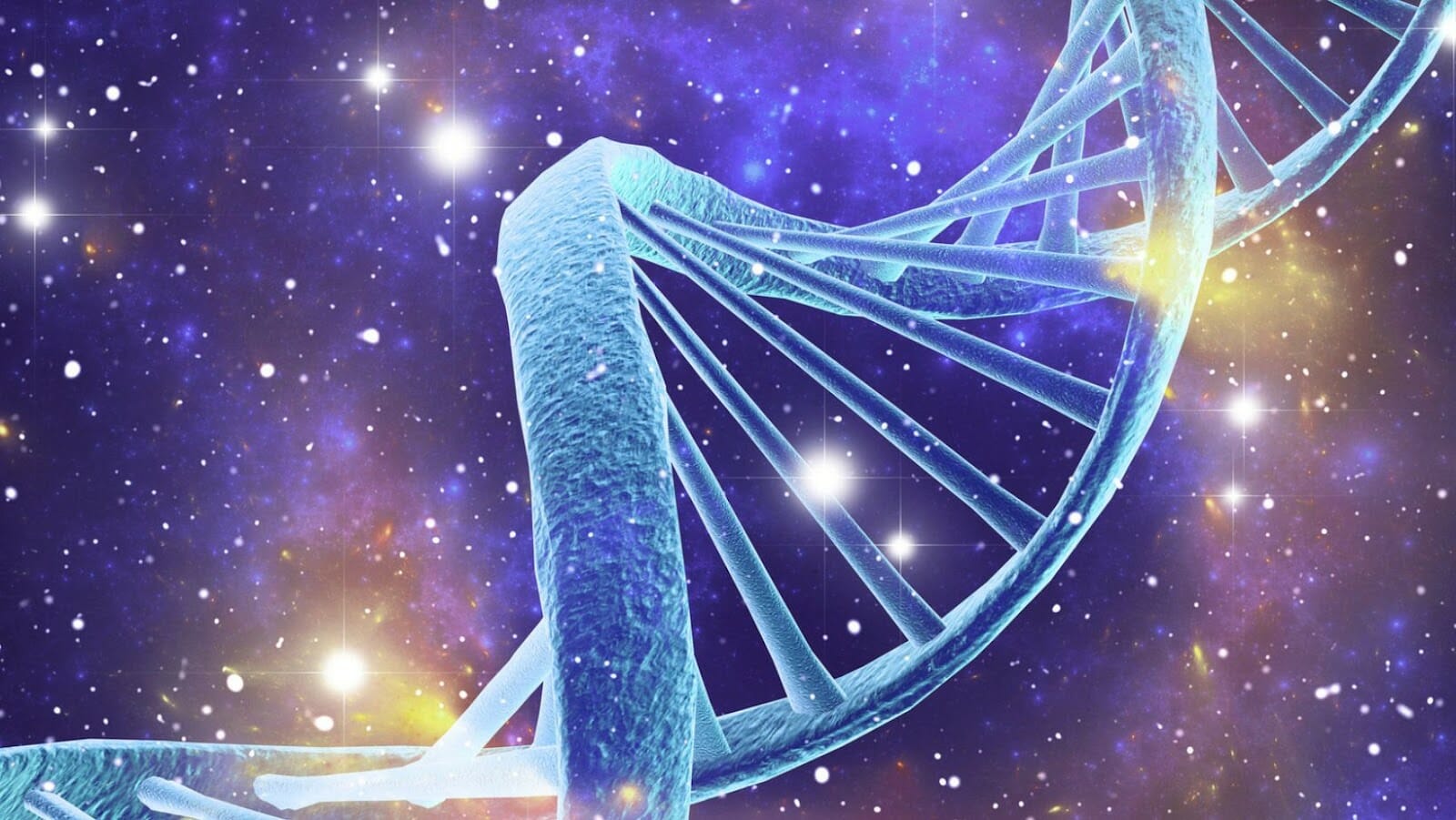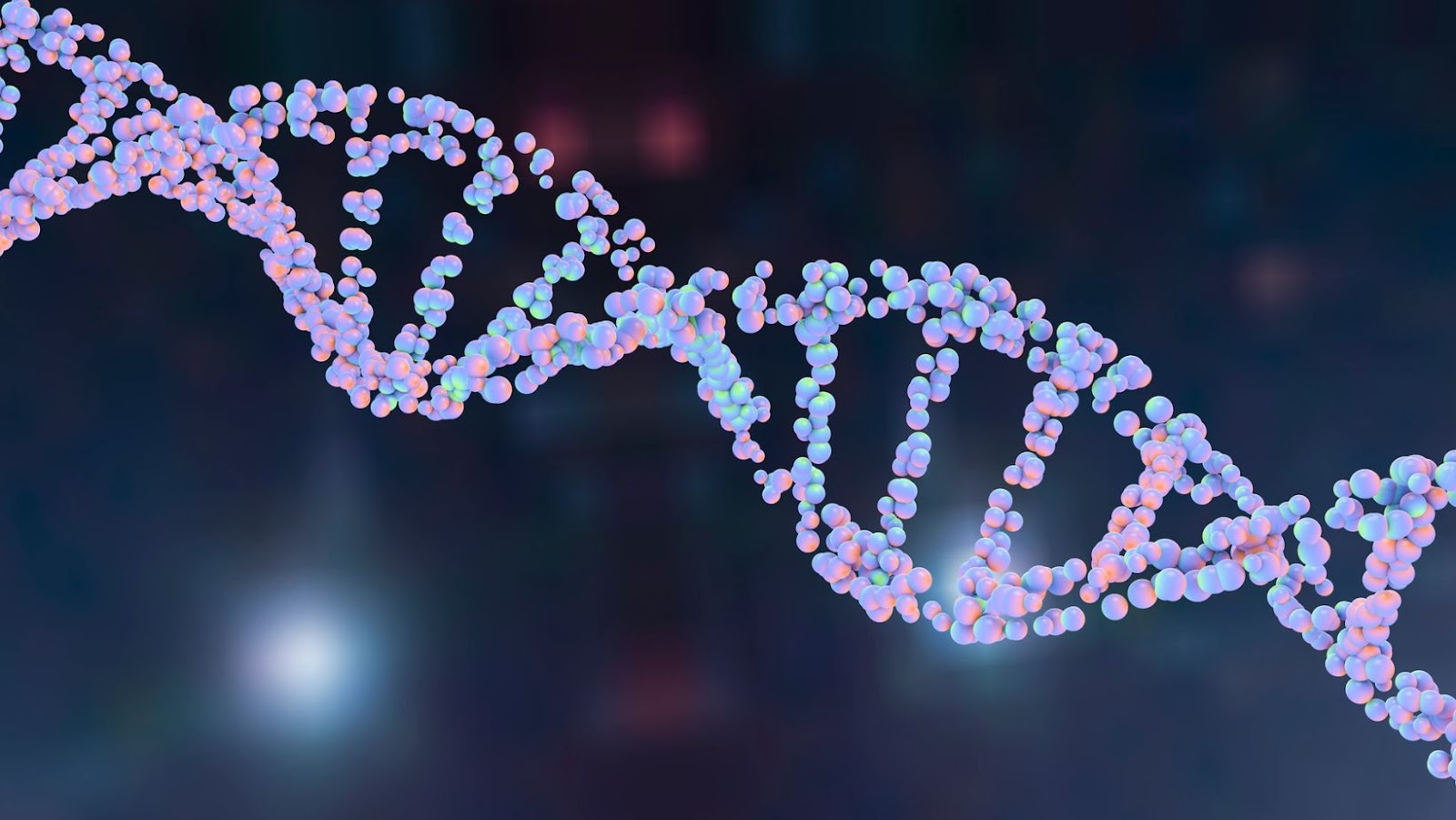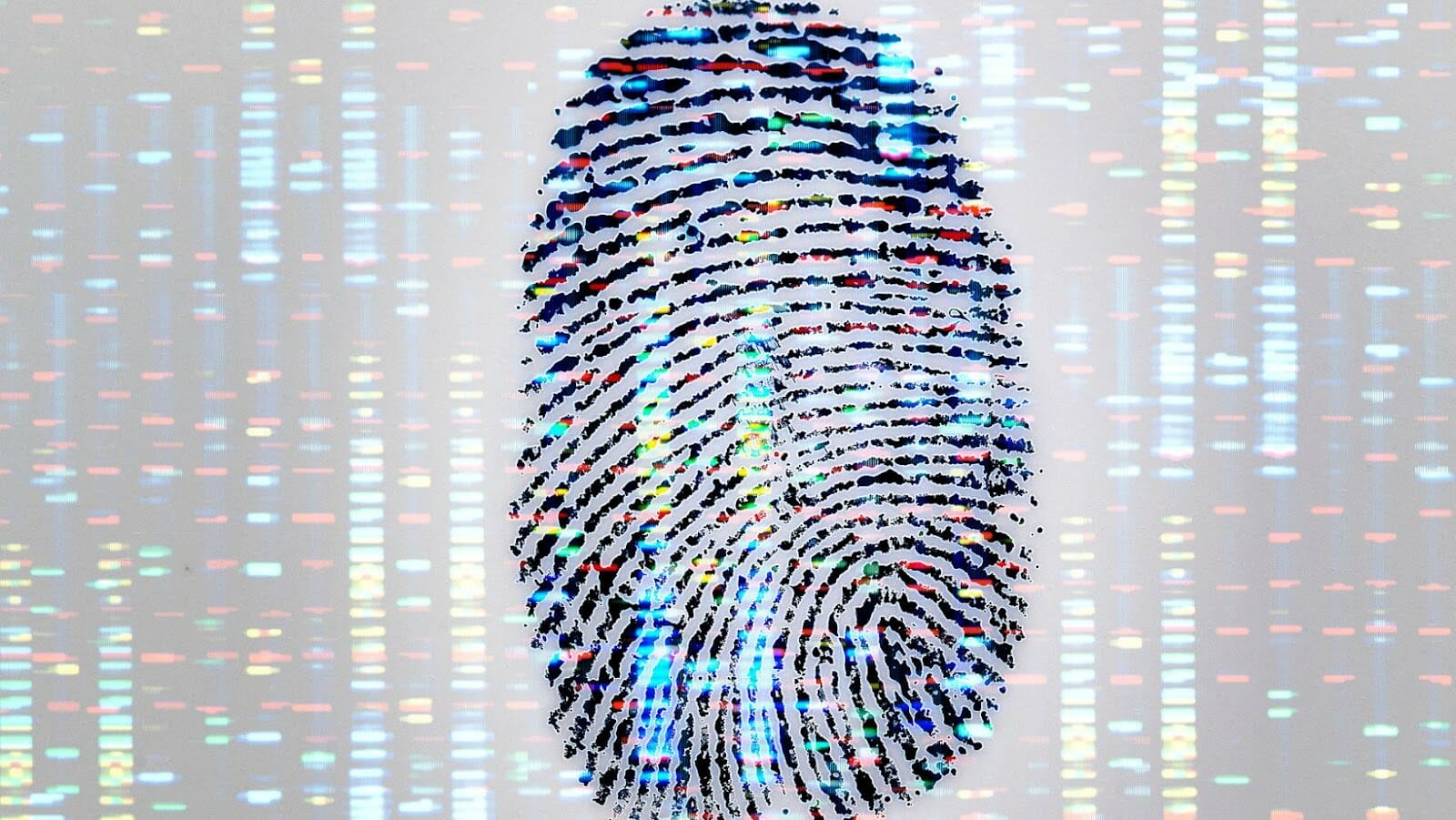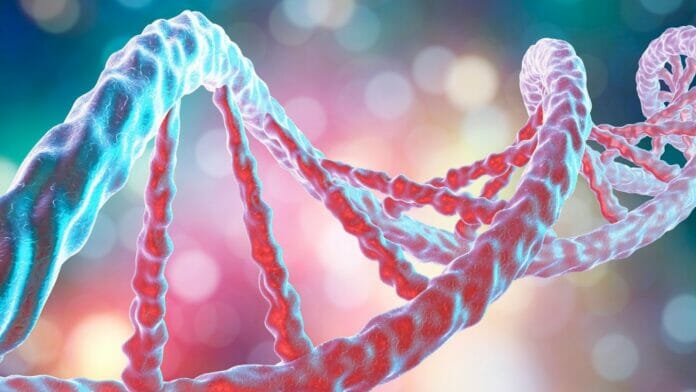DNA is a key molecule that stores biological information and is essential for life. This molecule houses the genetic code that directs the growth, development, and functioning of living organisms. To understand how it does this, we must first look at the structure and function of DNA. In this article, we will discuss the features of a DNA molecule that help it to store and transmit genetic information efficiently.
Overview of DNA molecule
DNA (Deoxyribonucleic acid) is a double-stranded, helical molecule found in the nucleus of the cell that contains genetic information essential for the growth, development, functioning, and reproduction of all living organisms.
DNA structure composed of nucleotides made up of a sugar, phosphate, and a nitrogenous base. The four nitrogenous bases include Adenine, Thymine, Guanine, and Cytosine, and the order of the bases determines the unique genetic code and specific traits of an organism.
DNA has several key features that make it an efficient information storage molecule. First, the sequence of nucleotides is incredibly stable, allowing for accurate replication and transmission of genetic information to offspring during cell division. Second, DNA has the ability to undergo mutations, providing natural variation and diversity among species. Lastly, DNA has a compact, coiled structure that allows for storage in a small space, allowing for efficient storage of vast amounts of genetic information.
Importance of DNA in biology
DNA, or deoxyribonucleic acid, plays a crucial role in biology as the genetic material that stores and transmits hereditary information from one generation to the next. Its unique structure and functions make it an efficient information storage molecule.
The features of DNA that make it efficient are:
| Double helix structure | Base pairing rules | Stability | Diversity |
| The double-stranded, twisted ladder shape of DNA allows for accurate replication during cell division and easy access for DNA polymerase enzymes during transcription. | The complementary pairing of nucleotide bases (adenine with thymine, and cytosine with guanine) ensures accurate DNA replication and transcription. | DNA’s structure and hydrogen bonding provide stability against chemical and physical degradation. | The genetic code can be rearranged, deleted, or added to, providing an immense diversity of possible genetic variations. |
Without DNA, the accurate transmission of genetic information and traits from one generation to the next would not be possible, making DNA a fundamental component of biological life as we know it.
Which Feature of Model 1 Best Illustrates How Biological Information is Coded in a DNA Molecule?
The unique structure and function of DNA make it an efficient information storage molecule required for biological processes.
The structure of DNA is built with nucleotides, consisting of a sugar, a phosphate group, and a nitrogenous base. The sequence of the nitrogenous bases determines the genetic information code, and this code is what makes up the genetic material.
The mechanism of DNA replication ensures that genetic information is accurately passed on to the next generation of cells.
Additionally, the base pairing rules in DNA make it stable, as only specific bases can bind together. This stability ensures that the genetic information is retained and not lost over time.
Overall, DNA’s unique properties of stable base pairing, replication, and genetic information code make it an efficient and reliable storage molecule required for the functioning of biological organisms.

DNA Features that Make it an Efficient Information Storage Molecule
DNA is an incredibly efficient information storage molecule – it is capable of storing an enormous amount of information that can be used to create new and complex life forms. In this article, we will examine some of the features of DNA that make it such an effective information storage molecule, including its structure and the genetic code.
We will also explore which feature of Model 1 best illustrates how biological information is coded in a DNA molecule.
Double Helix Structure
The double helix structure of DNA is a key feature that makes it an efficient information storage molecule. It consists of two strands of nucleotides wound around each other in a spiral pattern, forming a ladder-like structure with rungs made up of base pairs.
Here are the features of DNA that make it an efficient information storage molecule:
| Stability | The two strands of DNA are held together by hydrogen bonds between the base pairs. This makes DNA a stable molecule that can withstand changes in temperature and other environmental conditions. |
| Replication | The base pairing rules of DNA allow the molecule to replicate itself with a high degree of accuracy. |
| Storage Capacity | The specific order of the nucleotide bases along the DNA molecule provides a vast storage capacity for genetic information. |
| Accessibility | The double helix structure of DNA allows for easy access to its genetic information by enzymes and other molecules that need to read or manipulate it. |
Pro Tip: Understanding the features of DNA that make it an efficient information storage molecule is essential for studying genetics and the molecular basis of life.
Base Pairing and Complementary Base Pairing
The base pairing and complementary base pairing of DNA make it an efficient information storage molecule. DNA is composed of nucleotides, each consisting of a sugar molecule, a phosphate group, and a nitrogenous base. The nitrogenous bases in DNA are adenine, thymine, cytosine, and guanine.
The base pairing of these nitrogenous bases is crucial in the storage of genetic information. Adenine pairs with thymine through two hydrogen bonds, while cytosine pairs with guanine through three hydrogen bonds. This base pairing ensures that the DNA sequence is complementary, with A always pairing with T and C always pairing with G.
This complementary base pairing is what allows for the semi-conservative replication of DNA during cell division, as each strand serves as a template for the synthesis of a new complementary strand. This process ensures that genetic information is accurately passed from one generation to the next.
Thus, the efficient base pairing and complementary base pairing features of DNA make it a reliable and stable molecule for the storage and transfer of genetic information for the continuity of life on earth.
Semiconservative Replication
Semiconservative replication is the process by which DNA makes a copy of itself during cell division, and each resulting DNA molecule contains one original strand and one new, complementary strand. This mode of DNA replication ensures a high degree of accuracy and fidelity in the transmission of genetic information from one generation to the next.
DNA has several features that make it an efficient information storage molecule:
| 1. Double-stranded structure: | DNA’s double helix structure provides inherent stability to the molecule, preventing the loss or degradation of genetic information. |
| 2. Base pairing rules: | The complementary base pairing of adenine with thymine and cytosine with guanine ensures that the order of bases in one strand of DNA determines the order in the complementary strand, providing a reliable method for copying and transmitting genetic information. |
| 3. Replication fidelity: | Several mechanisms exist within the cell to ensure the accuracy and fidelity of DNA replication, including proofreading and mismatch repair enzymes. |
These features contribute to the highly efficient and accurate storage and transmission of genetic information in DNA.
Pro Tip: Understanding the properties of DNA can help us develop new and innovative methods for editing and manipulating genetic information.
Non-random Alignment of Nucleotides
DNA is one of the most efficient information storage units found in nature. One of the primary features that make it possible is the non-random alignment of nucleotides.
| Base | Complement |
| Adenine (A) | Thymine (T) |
| Cytosine (C) | Guanine (G) |
This sequence acts like a “code” that carries genetic information. Two complementary strands of DNA run in opposite directions and pair up, A with T and C with G, to form the famous double helix structure. This alignment ensures that genetic information is accurately preserved and transmitted between generations.
Another important feature of DNA is its ability to repair itself as it replicates. A sophisticated system of repair enzymes that operate at the molecular level constantly monitor and repair any errors that occur during the copying process, providing a mechanism of quality control that ensures the accuracy of the genetic code.
These features make DNA an efficient information storage molecule, capable of transmitting a vast amount of genetic information with incredible accuracy and fidelity over long periods of time.
Model Illustrations of Biological Information Coding in DNA Molecule
DNA is an incredibly efficient tool for storing biological information. It is able to store a large amount of data within a relatively small space. In this article, we will explore the features of DNA that make it an efficient information storage molecule.
We will explore the features of model 1 that best illustrate how biological information is coded in a DNA molecule.
Model 1: DNA Helix, Base Pairing, and Complementary Base Pairing
The DNA molecule is a double helix formed by two strands of nucleotides, represented by the Model 1: DNA Helix, Base Pairing, and Complementary Base Pairing. These nucleotides pair up through hydrogen bonds and specific complementary base pairing, with adenine pairing with thymine and cytosine pairing with guanine, forming the rungs of the helix.
The pairing of these nucleotides produces a language or genetic code that can be read by the cell to produce proteins and other cellular products, making DNA an efficient information storage molecule.
Some features that make DNA an efficient information storage molecule include its double helix structure, stable hydrogen bonds, and the ability of the nucleotides to be arranged in any sequence, making it possible to produce a virtually infinite number of genetic codes.
The Model 1 helps illustrate the key concepts of DNA and its fundamental structure, providing a visual representation of nucleotide pairing and the double helix structure.

Model 2: Semiconservative Replication
The Semiconservative Replication model is an illustration of how DNA replicates itself during cell division, where each strand of the original DNA molecule acts as a template to synthesise a new complementary strand. This process ensures that each daughter molecule has one old and one new strand of DNA, conserving half of the original genetic information.
The features of DNA that make it an efficient information storage molecule include:
| – Double-helix structure that allows for compact storage and easy accessibility of genetic information. |
| – Four nucleotide bases (adenine, guanine, cytosine, and thymine) that can be combined in a vast number of permutations to encode the diversity of genetic information. |
| – Chemical stability that protects the genetic information from damage and mutation. |
| – DNA repair mechanisms that correct any errors in the genetic information. |
Understanding the Semiconservative Replication model and the features of DNA helps in comprehending the molecular basis of genetics and genetic information flow, which is critical for various fields such as medicine, biotechnology, and agriculture.
Pro tip: We can further explore the central dogma of molecular biology, which elucidates the flow of genetic information from DNA to RNA to proteins.
Model 3: Non-random Alignment of Nucleotides
Model 3: Non-random Alignment of Nucleotides is one of the three models that illustrate the biological information coding in the DNA molecule, and it explains the non-random sequence of nucleotides in the DNA structure.
In this model, the sequence of nucleotides is aligned in a precise manner that encodes the genetic information through its chemical structure. Each nucleotide consists of a combination of deoxyribose sugar, phosphate, and nitrogenous base, and the unique combination and sequence of these bases determine the genetic code.
Non-random alignment helps to maintain the integrity of the genetic information encoded in the DNA molecule while allowing for variations to occur, which may alter the genetic code, leading to genetic mutations.
The features of DNA that make it an efficient information storage molecule include its stable double helix structure, the ability to store vast amounts of information, the capacity to replicate, and the ability to transfer genetic information to offspring.
Pro Tip: To understand the full potential of DNA as an information storage molecule, it is essential to understand its underlying structure and the mechanisms that govern its functioning.
Which Feature of Model 1 Best Illustrates How Biological Information is Coded in a DNA Molecule?
DNA is an efficient information storage molecule due to its ability to store large amounts of data in a small space. The features of DNA that make it such an efficient molecule have been modelled in a variety of ways. Model 1 is unique in that it best illustrates how biological information is coded in a DNA molecule.
We will explore this model and discuss how it works.
Comparison of Model 1 Features with other Models
Model 1 stands out from other models due to its unique set of features that best illustrate how biological information is coded in a DNA molecule. Some of the prominent characteristics of Model 1 include its double-helix structure consisting of nucleotides that encode genetic information in a four-letter code i.e., Adenine, Thymine, Cytosine, and Guanine, and its ability to replicate itself accurately.
The efficiency of DNA as an information storage molecule is due to its properties such as its stability, specificity of base pairing, and its ability to carry huge amounts of genetic information. These features of DNA help it to encode, store, and retrieve biological information with precision and accuracy.
Understanding the features that make DNA an efficient information storage molecule is crucial in discovering the molecular mechanisms of life, genetic diseases, and potential drug targets.
Experimental Proof
The double helix structure of DNA and the complementary base pairing system are the two key features that make DNA an efficient information storage molecule.
The double helix ensures that DNA is compact and stable, and the complementary base pairing system allows for accurate and efficient replication and transcription of genetic information.
The experimental proof for this lies in numerous studies and experiments conducted by scientists over the years, including the Hershey-Chase experiment, the Avery-MacLeod-McCarty experiment, and the Watson-Crick model of DNA.
These experiments and models provided strong evidence for the role of DNA as a genetic information storage molecule, and helped revolutionise our understanding of genetics and molecular biology.
Today, DNA is viewed as the blueprint of life, and is essential to our understanding of the fundamental processes that govern all living organisms.

Practical Applications of the Efficient Information Storage Capability of DNA in Technology and Science
The efficient information storage capability of DNA has led to its practical applications in various fields of technology and science. DNA’s unique feature of molecular coding of biological information makes it an efficient information storage molecule.
The features that make DNA suitable for information storage are:
| Feature | Description |
| Chemical stability | DNA molecules are stable and unaffected by environmental factors such as temperature, pH, and chemicals. |
| Replication | DNA can accurately replicate, and the new molecule carries the same genetic information as the original molecule. |
| High-density storage | DNA can store vast amounts of information in a small space, making it an efficient way to encode and store genetic information. |
Practical applications of DNA storage include gene editing, genetic engineering, forensic analysis, and data storage. DNA’s ability to store vast amounts of digital data has led to researchers using DNA as a potential medium for data storage. This technology can revolutionise data storage in the future by utilising the efficient information storage capability of DNA.
The molecular coding of biological information in DNA is best illustrated by the specific sequence of nucleotides in the DNA molecule. This sequence determines the genetic traits of an organism, and any changes to the sequence can lead to mutations and genetic disorders.
Pro Tip: The practical applications of DNA in technology and science are continually evolving, and researchers need to keep up with the latest advancements to make the best use of this technology.


